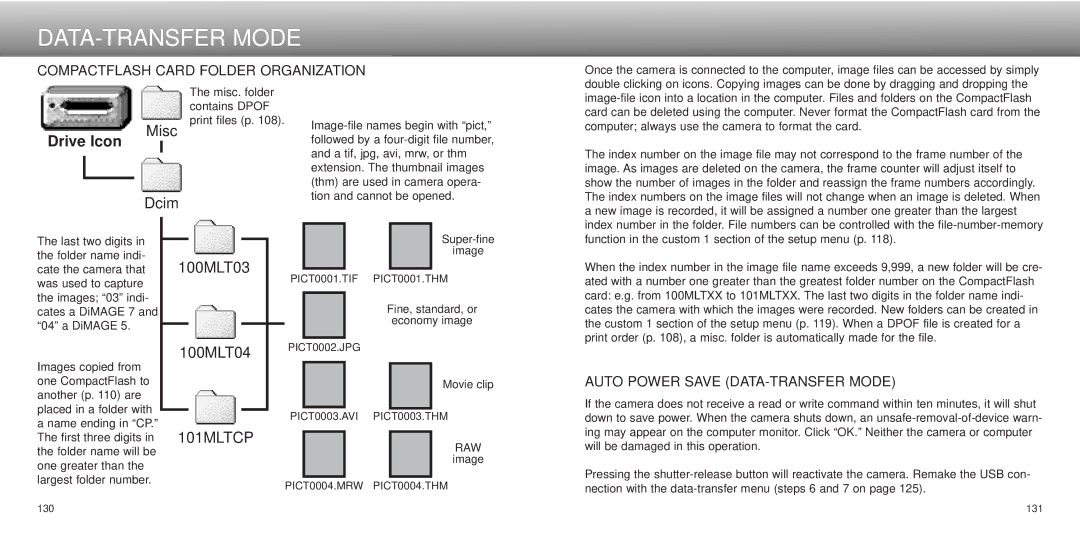
DATA-TRANSFER MODE
COMPACTFLASH CARD FOLDER ORGANIZATION
Once the camera is connected to the computer, image files can be accessed by simply double clicking on icons. Copying images can be done by dragging and dropping the
Drive Icon
The misc. folder contains DPOF print files (p. 108).
Misc
The index number on the image file may not correspond to the frame number of the image. As images are deleted on the camera, the frame counter will adjust itself to show the number of images in the folder and reassign the frame numbers accordingly. The index numbers on the image files will not change when an image is deleted. When
Dcim
a new image is recorded, it will be assigned a number one greater than the largest index number in the folder. File numbers can be controlled with the
The last two digits in the folder name indi- cate the camera that was used to capture the images; “03” indi- cates a DiMAGE 7 and “04” a DiMAGE 5.
Images copied from one CompactFlash to another (p. 110) are placed in a folder with a name ending in “CP.” The first three digits in the folder name will be one greater than the largest folder number.
image
100MLT03
PICT0001.TIF PICT0001.THM
Fine, standard, or
economy image
100MLT04 | PICT0002.JPG |
|
|
| |
|
| Movie clip |
| PICT0003.AVI | PICT0003.THM |
101MLTCP |
| RAW |
|
| |
|
| image |
| PICT0004.MRW | PICT0004.THM |
function in the custom 1 section of the setup menu (p. 118).
When the index number in the image file name exceeds 9,999, a new folder will be cre- ated with a number one greater than the greatest folder number on the CompactFlash card: e.g. from 100MLTXX to 101MLTXX. The last two digits in the folder name indi- cates the camera with which the images were recorded. New folders can be created in the custom 1 section of the setup menu (p. 119). When a DPOF file is created for a print order (p. 108), a misc. folder is automatically made for the file.
AUTO POWER SAVE (DATA-TRANSFER MODE)
If the camera does not receive a read or write command within ten minutes, it will shut down to save power. When the camera shuts down, an
Pressing the
130 | 131 |
